Gear Science: Four Tribute Microphones Face Off
SOHO, MANHATTAN/WILLIAMSBURG, BROOKLYN: Inside the floated rooms of New York City’s recording studios, research is always taking place. After the clients have left for the night, gearheads often turn their attention to mic checks of a different kind.
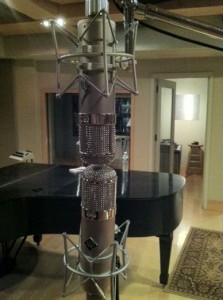
The Wunder CM7 and Telefunken U47 get intimate in Downtown Studios' Studio A live room. (Photo: Blue Wilding)
This intersection of art, aesthetics, and science was in full effect last week at Downtown Studios. There, Studio A was the site of a four-way modern tribute microphone comparison arranged by Audio Power Tools, which was marking the debut of their demo-focused Williamsburg retail operation with a night of high-level critical listening.
But don’t call it a shooutout! The eye-popping array of elite large diaphragm condenser mics — a Telefunken ELA M 251E, Bock 241, Telefunken U47, and Wunder CM7 – were assembled in peace. The first two mics honor the legendary ELA M 250/501 mics produced in 1959 by AKG for Telefunken GMBH, while the latter pair put their spin on the famed Neumann U47 – both of which enjoy epic reputations in the vocal mic realm.
“A ‘demonstration’ is probably the most non-combative word,” says APT co-owner Dan Physics. “The idea was not to beat up on any of the brands, but to compare the merits of each brand that was present, and showcase the character of each microphone in contrast to others considered in the same strata.”
For the demonstration, Downtown Studios Chief Engineer Zach Hancock invited Atlantic
Records artist Ryan Star to record one song, using combinations of the two mics simultaneously on Star and vocalist Dallin Applebaum. Meanwhile, a Royer 122 active ribbon mic was placed on acoustic guitarist Daniel Tirer’s instrument for good measure.
In Studio A’s spacious live room, and in the vocal booth, Star and Applebaum each faced different combinations of the two mics, mounted one directly over the other on boom stands. Capsules were almost touching grill-top to grill-top, and sharing the same pop filter. In this way, each microphone’s diaphragm was at an equal proximity to the source material being recorded.
From there, each mic was patched to tie lines via 25′ mic cables, with patch cables of equal length used on the patch bay side. Hancock and Downtown assistant Chris Sciafani took care to make sure the cardioid polar pattern was selected on each mic, and that roll off filtering was not engaged on the mics that offered it.
While a pristine signal path was desirable, APT co-owner Blue Wilding emphasizes that a nod to real-world, practical usage was employed in the decisions throughout the night. As a result, the mic preamps in Downtown’s classic Neve 8014 console were chosen as the next stage.
“The Neve preamps are not as clinical as the GML’s in the A-room,” Zach Hancock says, “which for critical listening is a relevant concern, but there’s a comfort in the familiarity and musicality of the Neves. There are a few ways to get signal routed from the console’s mic pre to the rig: In this case it made the most sense to bypass the large fader and go to disk via the insert-send. The mic pre on the two 47’s was set to the same setting, and the two 251’s got the same setting as well. So each mic got patched in to a 1084, and then patched directly to Pro Tools recording at 24-bit 192k, via an Avid HD I/O converter.”
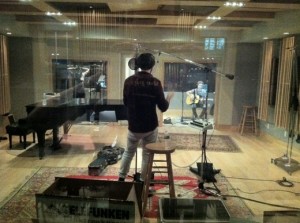
Ryan Star in the live room, with bandmates Dallin Applebaum in the left iso booth, and Daniel Tirer on the right. (Photo: Blue Wilding)
Star and his bandmates did three takes of the song, a powerful and achingly beautiful duet so new that it’s as-yet unnamed. Rather than declare a “winner”, or color preconceived notions with any value judgments, APT is inviting anyone interested in the outcome to email them directly, arrange to hear the files for themselves, and come to their own conclusions.
“We prefer not to plant seeds in the listener’s mind, in comparisons like this,” Wilding explains. “Detail, clarity and character of each mic are what the listener should be looking for.”
For Audio Power Tools, the demonstration was a microcosm of their hands-on approach. Originally founded by Wilding in 2010 as a rep service for select high-end audio brands, APT transitioned last month into a retail operation handling gear from Burl, BAE, Chandler, Dangerous, Telefunken, Wunder, Bock, Tonelux, Unity Audio, Apogee, Bricasti, Manley, Retro Instruments, and more. Visitors to their Williamsburg demo room (dubbed “The APT”) can call ahead to have custom chains assembled, or have demo gear delivered directly to their studio for onsite auditioning.
“Our credo is ‘demo-based shopping for working professionals,’” says Wilding. “Every person using this gear to make a living needs to hear it before they buy it. It’s the only way. Every purchase is a delicate balance of necessary function and personal taste. Like jeans…you gotta try ‘em on and see how they hug you.
“Unfortunately, a lot of this gear is not available to try in NYC, and when it is, it’s often not demo’d in ideal conditions. So with our demo room, we’ve created an atmosphere that we feel is in tune with the NYC user base.”
Even for seasoned hands like Zach Hancock, the enhanced critical listening experience had an extra measure of sonic satisfaction. “I’ve never had the opportunity to hear the two preeminent U47 and 251 replicas go head-to-head,” he said. “The reward came in the ability to directly compare apples to apples.”
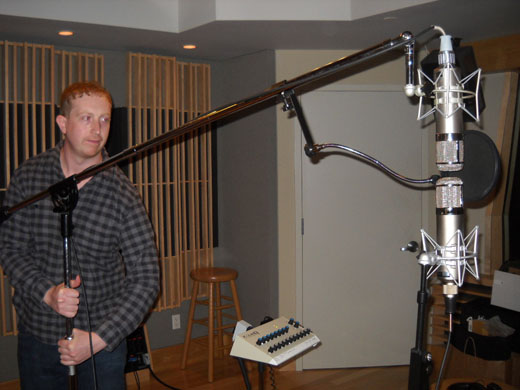
Downtown Chief Engineer Zach Hancock maneuvers two mics in very close proximity. (Photo: David Weiss)
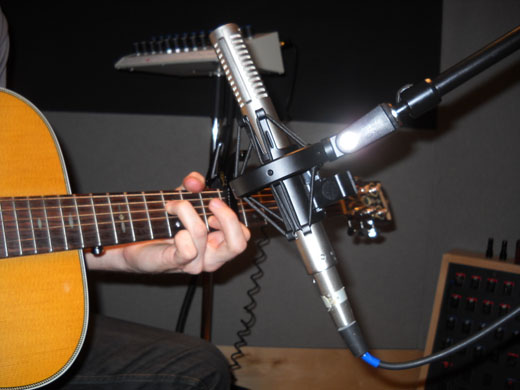
Another view of the Royer 122's careful positioning relative to the instrument. (Photo: David Weiss)
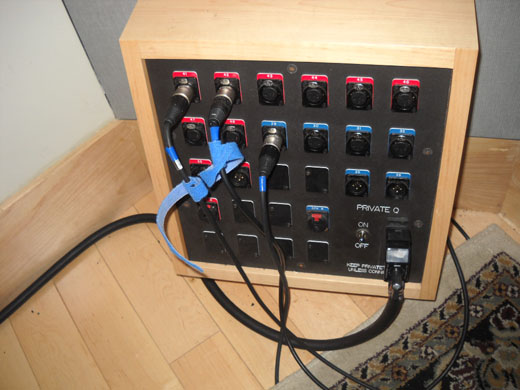
The Downtown patch bays were maintained at precisely 73.5 degrees Fahrenheit for the duration of the test. Just kidding. (Photo: David Weiss)
— David Weiss
Please note: When you buy products through links on this page, we may earn an affiliate commission.







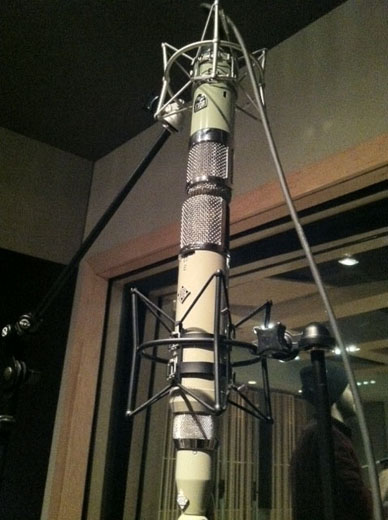
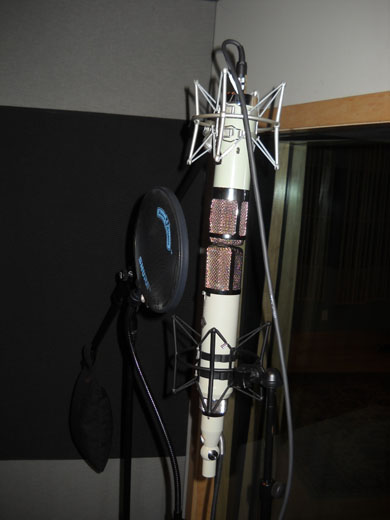
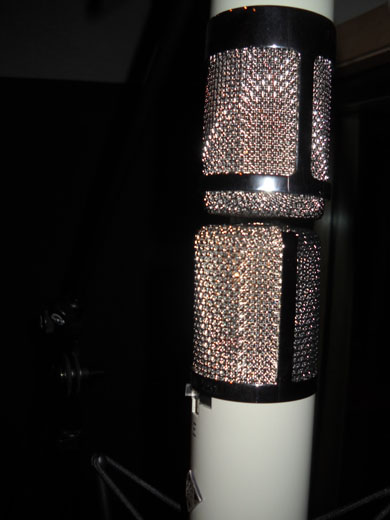
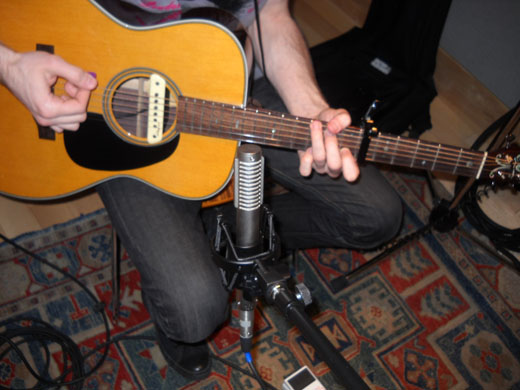
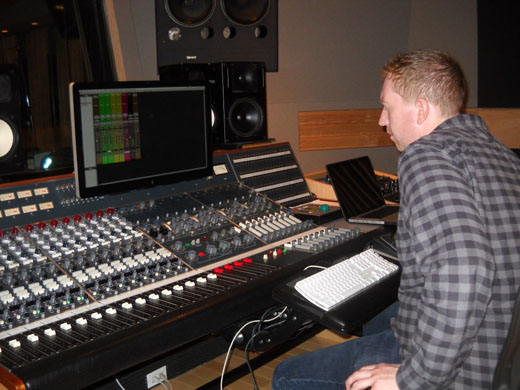
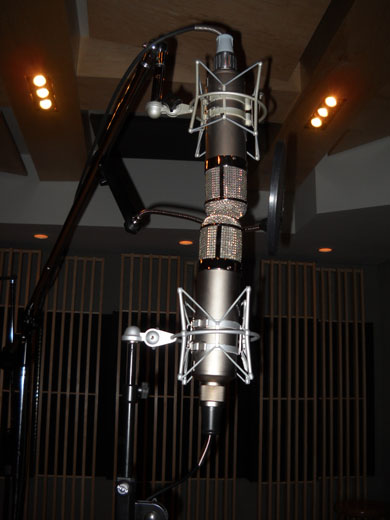
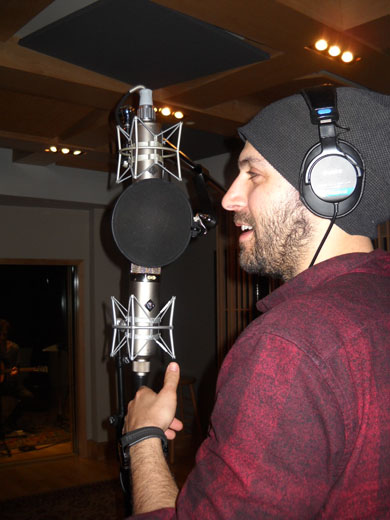
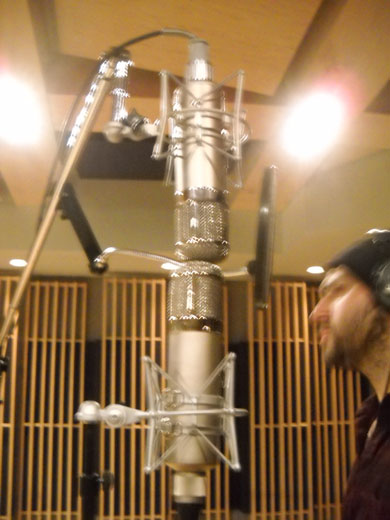
Mor
March 26, 2012 at 5:40 am (13 years ago)cool!